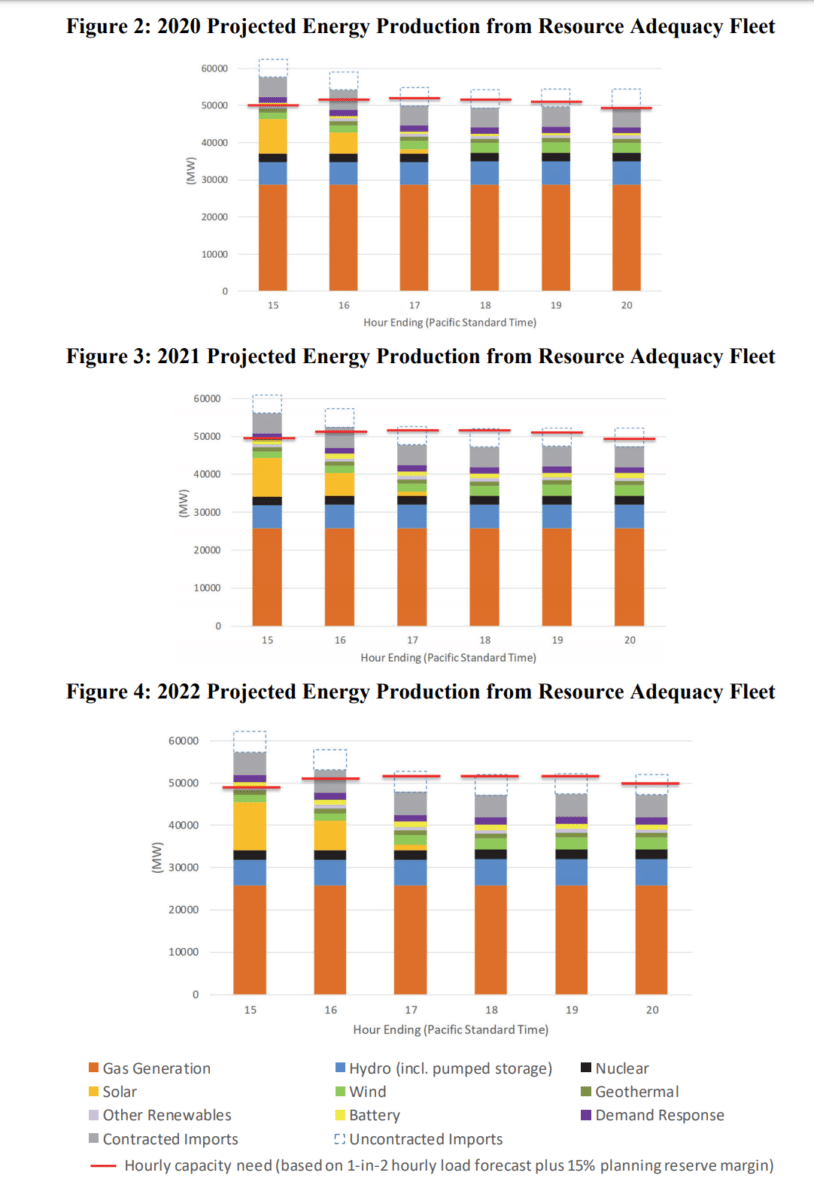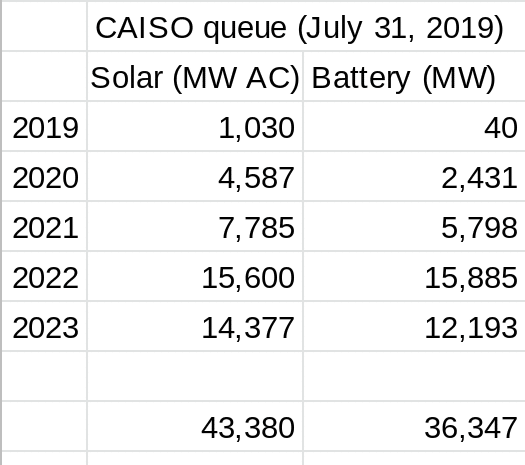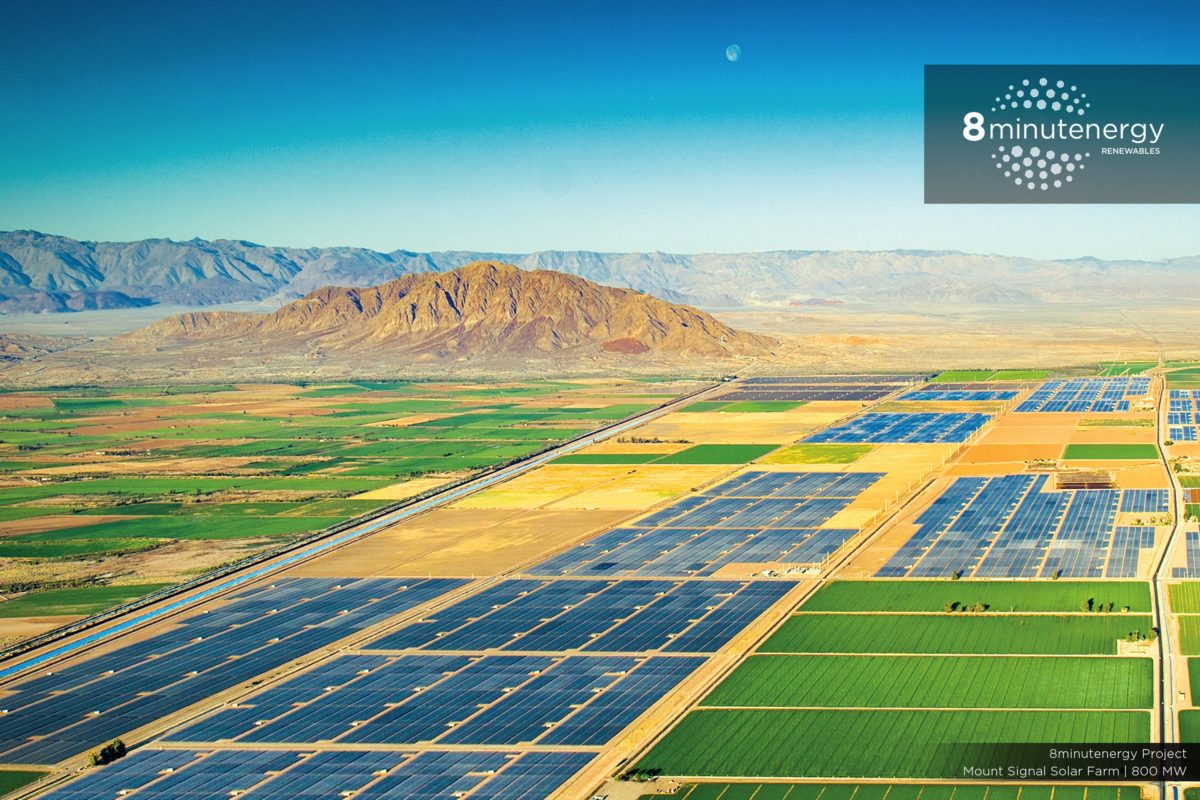The California Independent System Operator (CAISO) has suggested, in a response filed (pdf) with the California Public Utilities Commission (CPUC), that “refinements [to an earlier analysis] indicate a greater operational deficiency reaching maximums of 2,300 MW, 4,400 MW, and 4,700 MW in 2020, 2021, and 2022, respectively.”
The grid manager of 90% of California’s electricity demand made two broad recommendations:
- Move forward with efforts to extend the once-through-cooling regulation
compliance dates for existing generation resources. - Develop a procurement plan for 2020-2022 to meet reliability needs and facilitate the
retirement of any generating unit that receives an OTC compliance date extension:- Direct resource adequacy procurement for uncontracted resources that are operational or mothballed;
- Direct increased resource adequacy procurement for uncontracted import resources;
- Ensure resources under construction are on-track for their online dates so that they do not exacerbate reliability concerns; and
- Direct procurement for new resources.
The report noted a prior analysis done by utility Southern California Edison (SCE), which found that generally:
The peak hour of the year occurs consistently in September. In 2020 and 2021, the projected peak falls within hour ending 17 (based on P.S.T. or 6:00 p.m. P.D.T.). By 2022, the peak shifts to hour ending 18 (based on P.S.T. or 7:00 p.m. P.D.T.).
As such, the analysis looks at various hours within that period when determining what the shortfall could be. From the report (below image), various electricity sources are shown, with solar power dropping (in yellow) from the left to the right as the evening progresses leading to the shortfall. Page 20 of the documents breaks out the capacity by source with number values, pages 26-28 break the same hourly data below into numbers as well.

In 2020, for the hours ending 17 through 19, the resource adequacy-backed energy is 2,200 MW, 2,300 MW, and 1,500 MW less than the hourly capacity need. In 2021, for the hours ending 17 through 20, the reliability gaps increase to 4,000 MW, 4,400 MW, 3,800 MW, and 2,200 MW. Then in 2022, for the same hours as 2021, the gap is 3,900 MW, 4,700 MW (peak value), 4,200 MW, and 2,600 MW.
And all of this led to a most astute observation by energy futurist/analyst/writer/speaker and EV-Grid Manager at @RockyMtnInst, Chris Nelder:
Put another way… Cali just issued a shadow RFP for 4.7 GW of RE/EE/storage. Great opportunity for developers. https://t.co/13beHBgvGt
— Chris Nelder @chrisnelder@mastodon.energy (@chrisnelder) August 14, 2019
And in a state like California, which has aggressive goals of reaching 50% renewables and 100% clean energy by 2045 – you’ve got to wonder if Nelder is right, and how exactly this is going to work. As CAISO said in its report, the sun goes down and the peak is too late for even west-facing solar panels.
Another consideration, not referenced directly in the document, is that Pacific Gas and Electric Company has requested that its bankruptcy court judge approve an 11% discount for the mNOC AERS energy storage project and an additional 15 months to deploy, while for the Hummingbird battery a 10% discount and 12 extra months to deploy have been requested. These projects were scheduled to be online in 2019 and 2020.
 The document notes that within the state, 1,047 MW of the 1,597 MW in nameplate capacity contracted to come online before August 2021 is solar, but “by the later peak hour in 2022 (hour ending 18 or 7 p.m.) average solar generation [is reduced] to only 0.04 percent of maximum generation.”
The document notes that within the state, 1,047 MW of the 1,597 MW in nameplate capacity contracted to come online before August 2021 is solar, but “by the later peak hour in 2022 (hour ending 18 or 7 p.m.) average solar generation [is reduced] to only 0.04 percent of maximum generation.”
CAISO’s future capacity queue, (image at left), includes 43 GWac of solar power and 36 GW of energy storage; however, most of it is back loaded. As well, most of the projects don’t have all documents in place.
This content is protected by copyright and may not be reused. If you want to cooperate with us and would like to reuse some of our content, please contact: editors@pv-magazine.com.








I wish this were true in terms of a “shadow RFP” of 4,700 GW of storage by 2022. But I don’t think it will be anywhere close to that timeframe unfortunately. CA’s current energy storage procuremnt framework (ESP) requires 2.8 GW to come online by 2024 and even though that framework has been up and running for 5 years now the large majority of procured projects won’t be online until 2024, b/c that’s the latest date allowed for COD. And there is apparently a large incentive for IOUs to allow a 2024 COD in order to achieve further cost savings over time while still meeting mandates. Everything in CA takes at least twice as long as it should, including especially procurement, permitting and construction. Getting 4.7 GW of storage online by 2022 simply won’t happn unless the state declares some kind of emergency. But with a ton of residual natural gas peaker plants still online the chance of that happening is minimal to none.
Shopping the CA market for PPA for our 100MW Solar PV project.
we permitted a 50MW, 4hrs Battery Energy Storage System (BESS)so we can add to the offering as an option for this project.
In the RFPs we have seen throughout this process, they all ask for the BESS option but so far none have opted for it when they saw the sticker price.
maybe a government incentive for Utilities, Muni’s and CCA can get this boom going
I really want to build it
The way the IOUs in particular SCE and PG&E have reacted to the past initiatives like the million roof initiative is to introduce tiered electricity rates. Enough solar PV was installed on roofs to create the ‘duck curve’ which the utilities use to justify a TOU or time of use rate spike. Usually from 3 PM to 9PM every day electric rates spike two, three or more times for that 6 hour TOU. SCE has a sliding TOU rate index. It starts at 17 cents/kWh, then slides to 31 cents/kWh, then back down to 17 cents/kWh.
This action by the electric utilities is pushing the already installed solar PV systems to add energy storage and change over to a more self consumption energy system, rather than a grid tied over generation credit system now in place. With behind the meter energy storage one can store and shift over generation during the peak generation period of the day to the more expensive TOU rates in late afternoon and early evening. Moving forward, folks that want to install solar PV on their homes will have energy storage to consider. Although home energy storage is still expensive, the ability for some of the upper line BESS to be able to power some home circuits even during a power fail may hold the sway to pay for the cost up front.